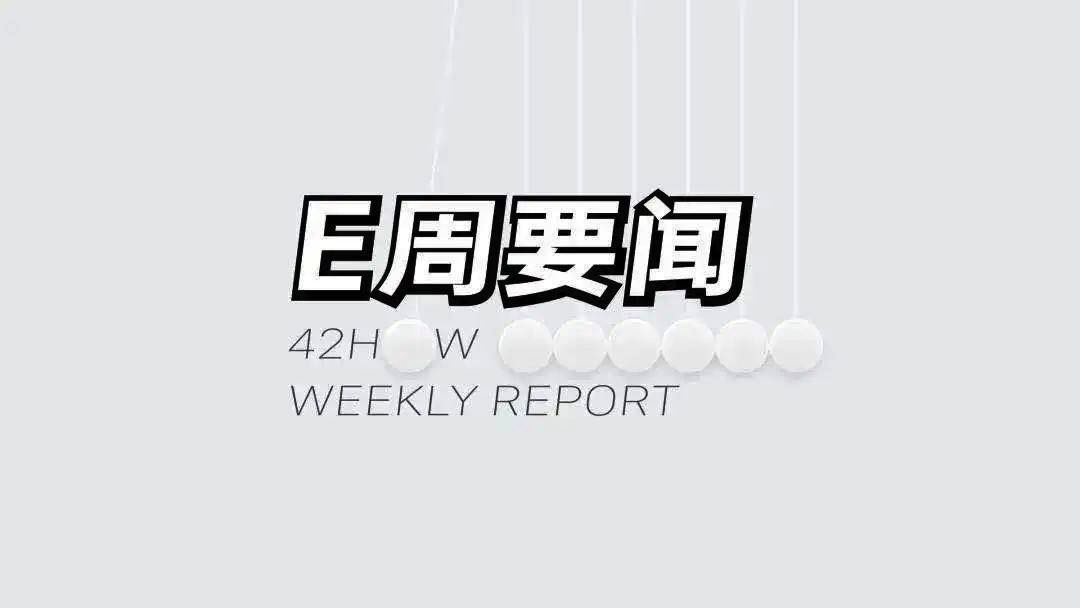Weekly Indices
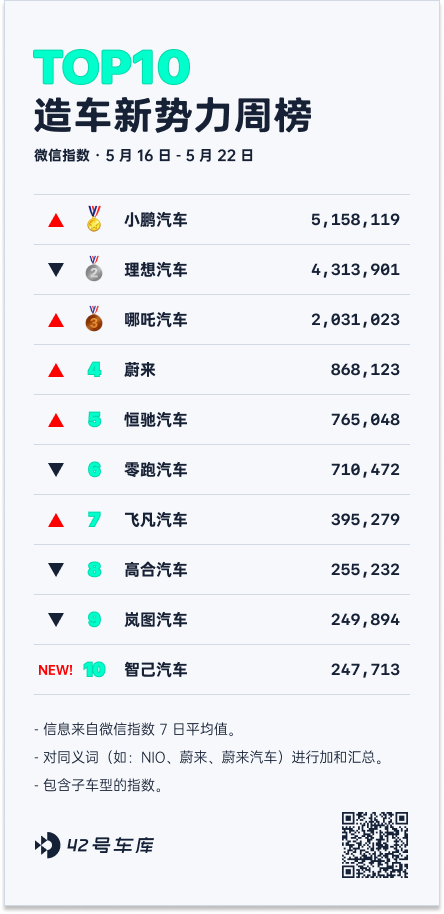
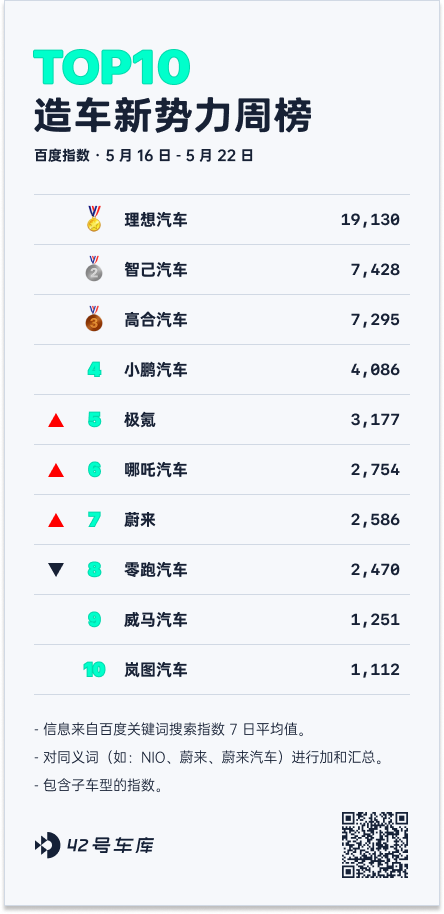
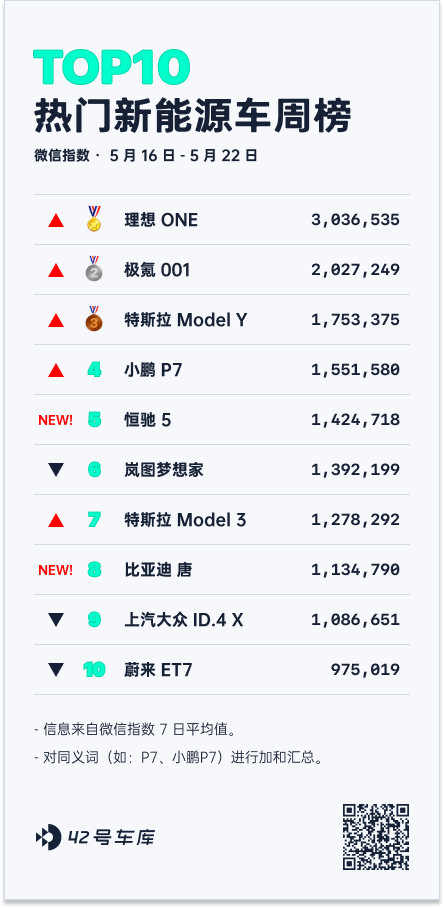
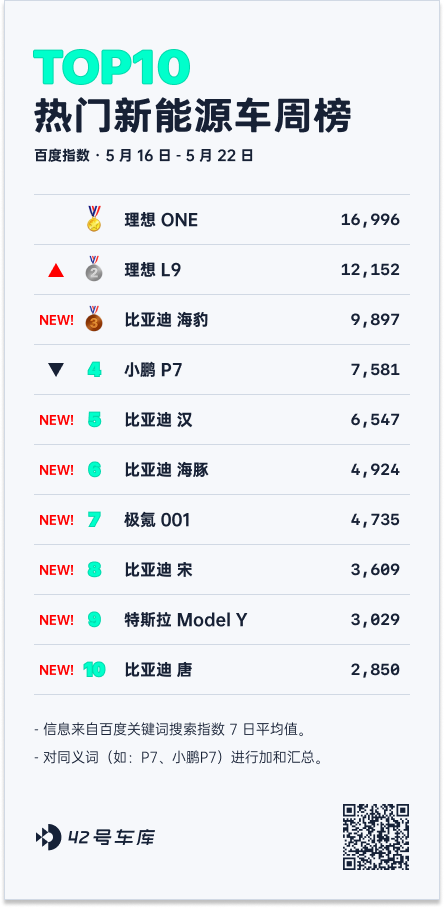
Weekly News
BYD Dolphin Officially Starts Pre-sales
On May 20th, BYD Dolphin officially started pre-sales, with pre-sale prices ranging from RMB 212,800 to 289,800.
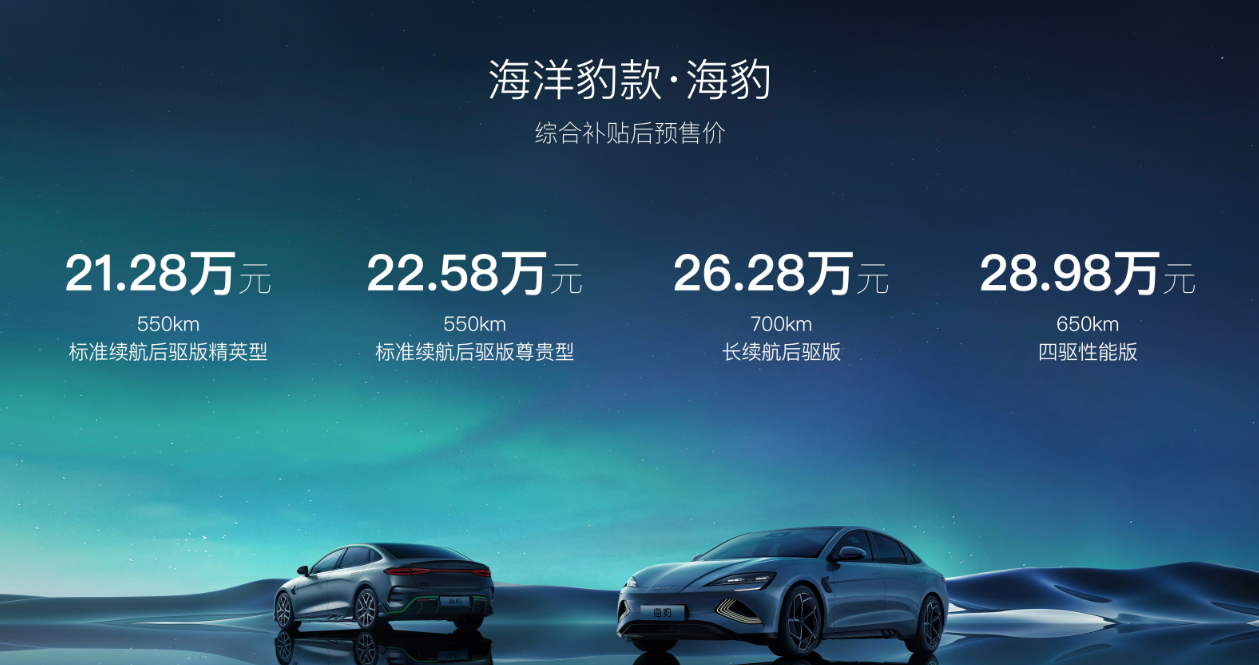
-
Standard Range Rear-Wheel Drive Elite Model: RMB 212,800, CLTC range of 550 km;
-
Standard Range Rear-Wheel Drive Luxury Model: RMB 225,800, CLTC range of 550 km;
-
Extended Range Rear-Wheel Drive Model: RMB 262,800, CLTC range of 700 km;
-
All-Wheel Drive Performance Model: RMB 289,800, CLTC range of 650 km.
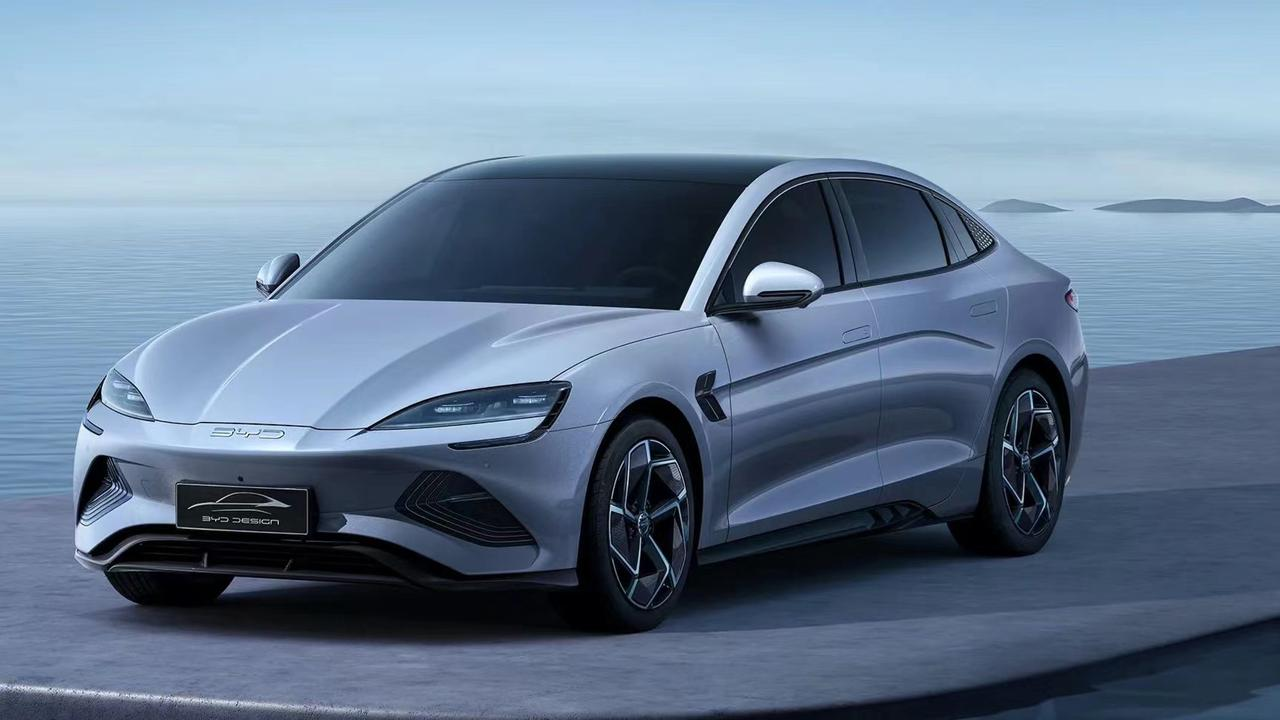 In terms of size, the BYD Han Sealion measures 4,800 × 1,875 × 1,460 mm with a wheelbase of 2,920 mm. It is slightly larger than Tesla Model 3, with a 106 mm longer overall length and a 45 mm longer wheelbase. The low and sleek design of the vehicle, combined with the active grille shutter, results in a drag coefficient of 0.219.
In terms of size, the BYD Han Sealion measures 4,800 × 1,875 × 1,460 mm with a wheelbase of 2,920 mm. It is slightly larger than Tesla Model 3, with a 106 mm longer overall length and a 45 mm longer wheelbase. The low and sleek design of the vehicle, combined with the active grille shutter, results in a drag coefficient of 0.219.
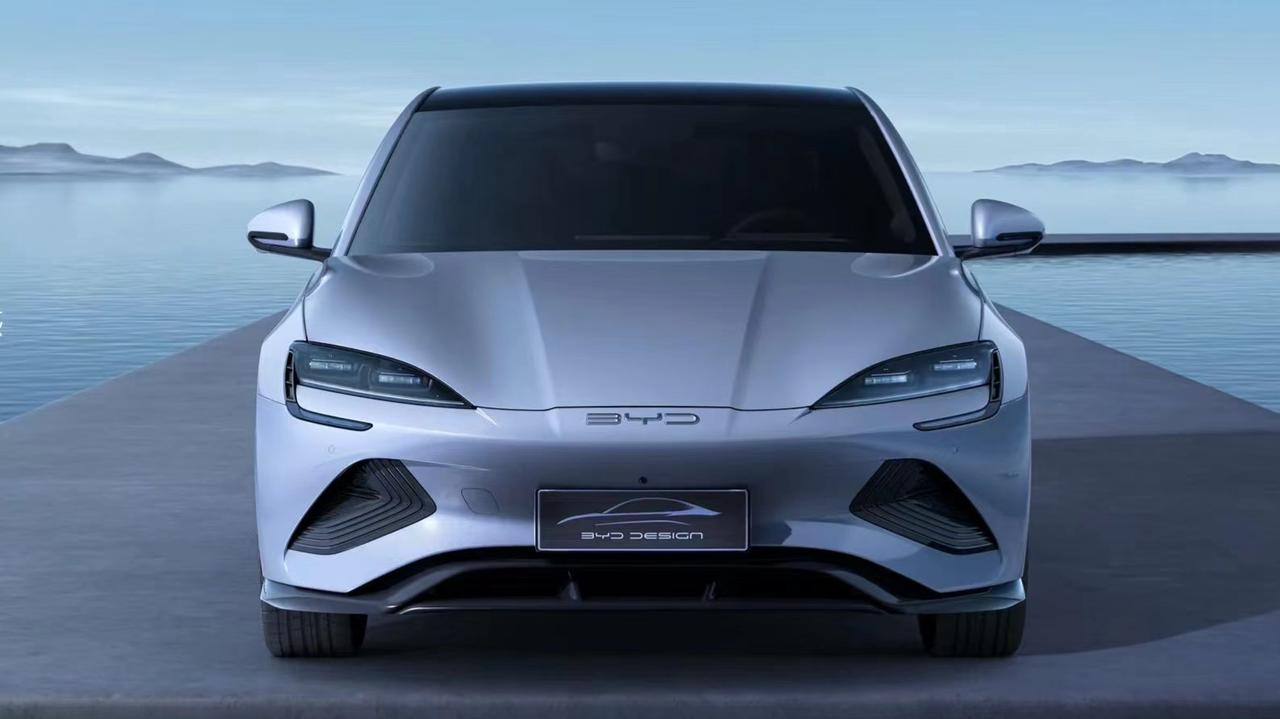
All versions of the BYD Han Sealion are equipped with lithium iron phosphate batteries, with the main differences between different versions being the battery capacity and motor configuration. The entry-level model has a battery capacity of 62.44 kWh, a maximum motor power of 150 kW, and can accelerate from 0 to 100 km/h in 7.8 seconds.
The rear-wheel drive long-range model, one level up, has a larger battery capacity of 82.56 kWh, which brings an improvement in driving range, and a higher motor power of 230 kW, which brings the acceleration time from 0 to 100 km/h down to five seconds.
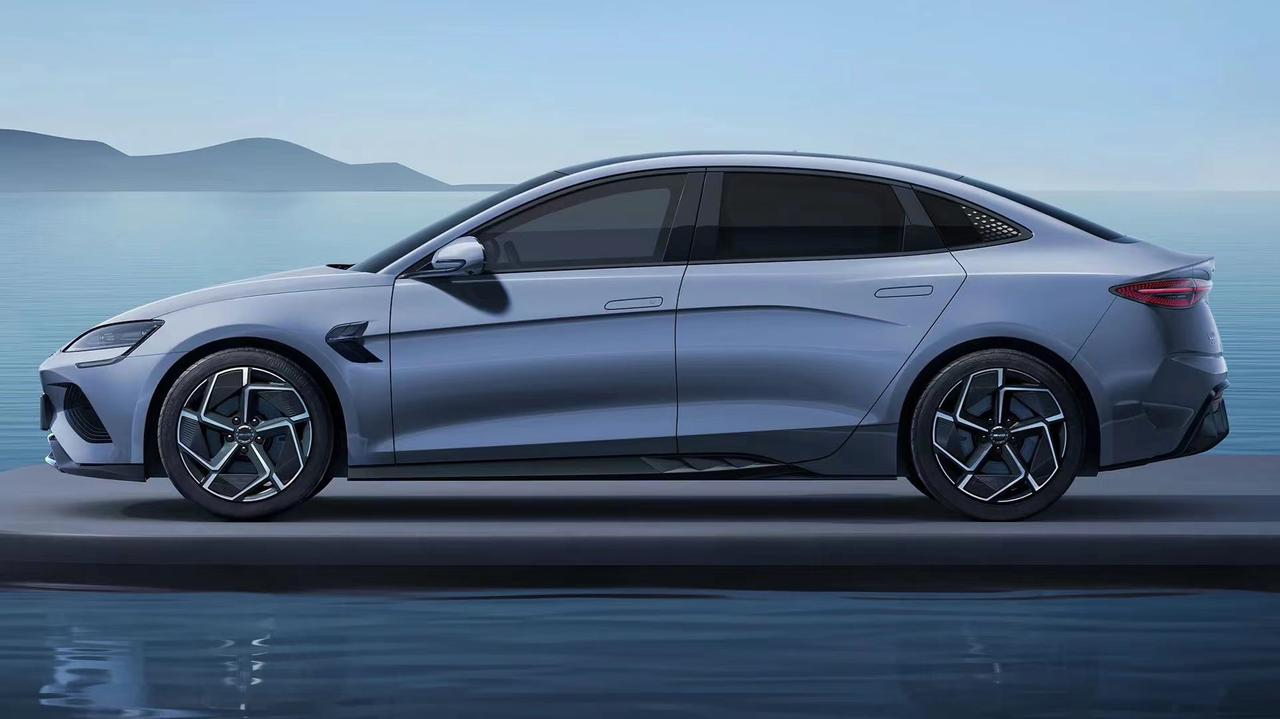
As for the top-of-the-line four-wheel drive high-performance model, it features an additional 160 kW induction motor on the front axle, paired with SiC Mosfet. This powertrain setup provides even more power and brings the acceleration time from 0 to 100 km/h down to 3.8 seconds, making it the second fastest production car from BYD.
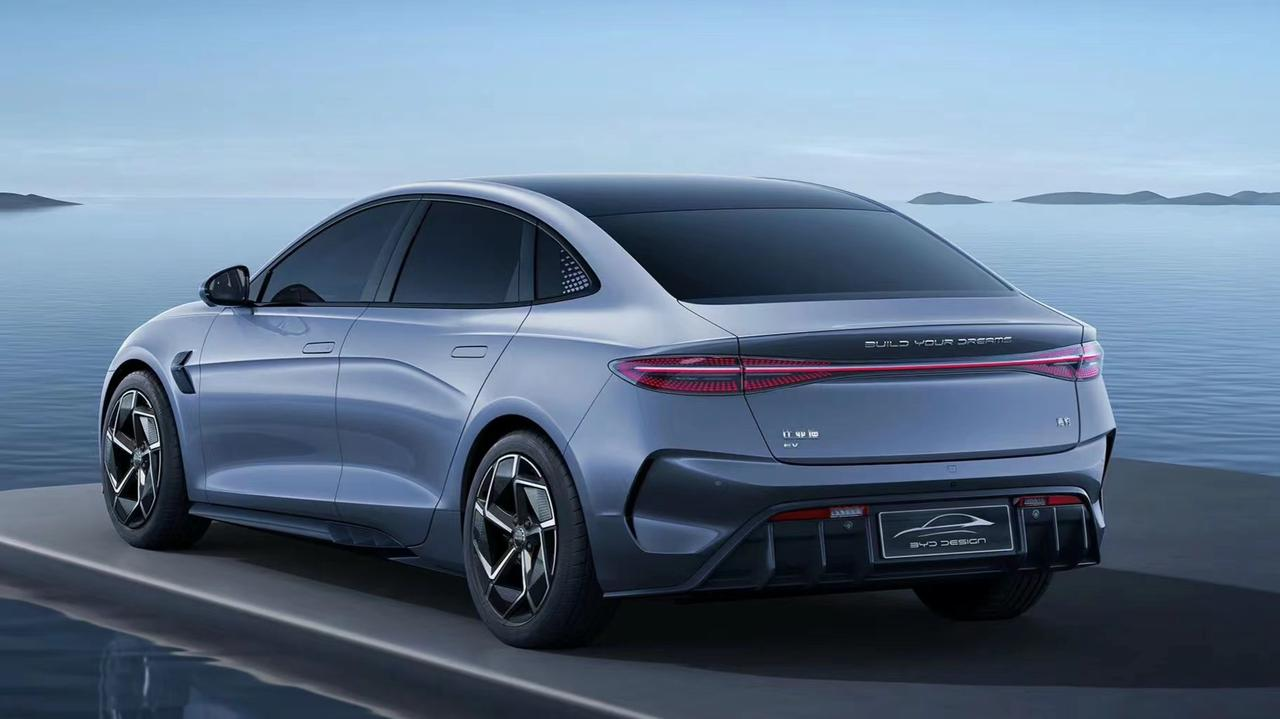
The unveiling of the BYD Han Sealion also marks the debut of BYD’s new CTB battery technology. Han Sealion will be the first pure electric vehicle from BYD to use this advanced battery technology.
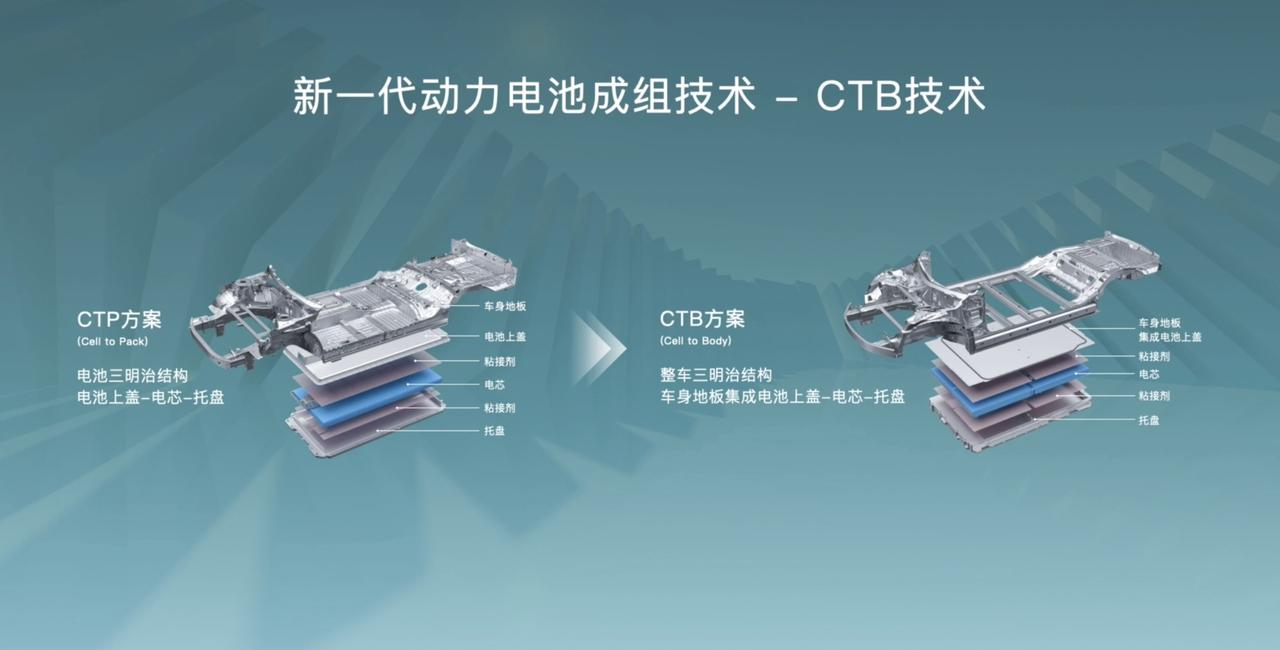
CTB, short for Cell To Body, is a new battery structure technology that shares similar features with the previously announced CTC technology. Compared with the previous CTP battery pack design without a module, the new CTB battery system offers higher integration, with the battery pack directly becoming a structural component of the vehicle chassis, resulting in better mechanical performance and a thinner Z-directional thickness of the chassis.
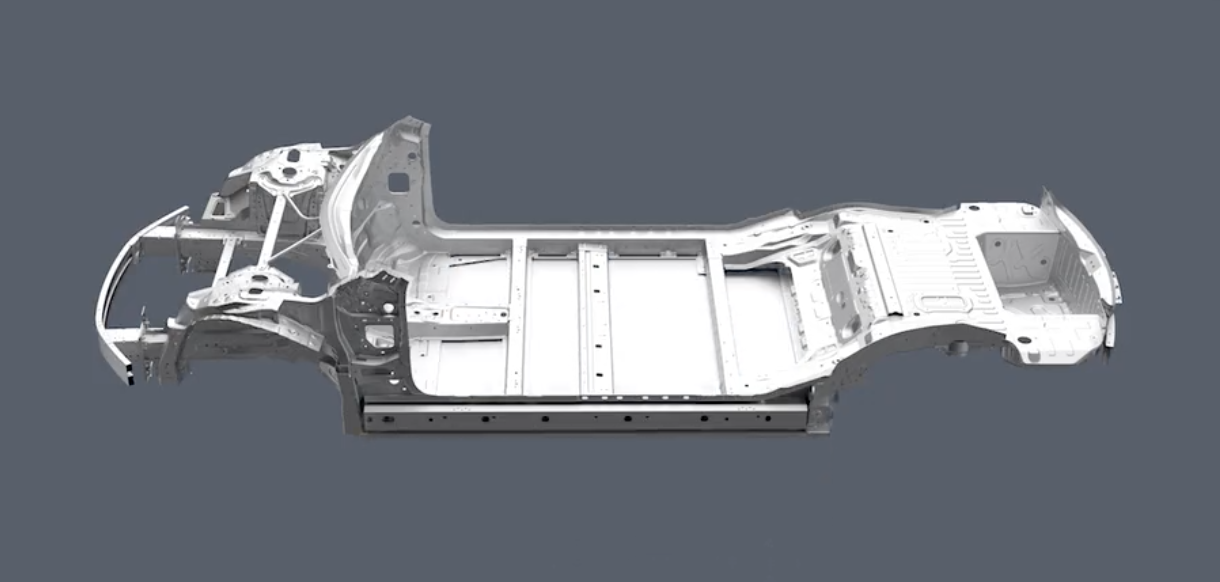
Quick Summary:Combining with the officially disclosed information, the Sea Lion is undoubtedly a competitive mid-size pure electric sedan. Its long-range model has an impressive configuration due to its large battery of over 82 kWh and rear axle oil-cooled electric motor of 230 kW, which ranks high in horizontal comparison. In addition, its low aerodynamic drag design and efficient thermal management are also the strengths of BYD. I believe that the comprehensive range of this car will not disappoint.
Moreover, the native pure electric platform of the Sea Lion not only provides many vehicle engineering advantages but also brings more design freedom to the vehicle. Although the Sea Lion’s front face may lack originality, overall, its exterior and interior design are of a high standard in BYD’s product line, and compared with competitors, the Sea Lion does not have a significant disadvantage.
The most direct product power deficiencies on the books are BYD’s shortcomings in intelligence. The lack of high-end driver assistance undoubtedly will lose some customers for the Sea Lion. However, objectively speaking, the overall market penetration rate of driver assistance is still in its early stages, and this deficiency’s impact is currently not fatal. BYD’s Han, which has the same deficiency, still maintains strong sales.
This car has a different meaning for BYD: it will cooperate with its older brother Han in the same price range to form a sports and household dual-purpose sedan product line, further expanding the audience through pure electric + DM-i + DM-p, forming a complete BYD new energy sedan circle of 200,000 to 300,000 yuan, and continuously increasing the recognition of BYD’s brand and products.
Avita 11 Interior Revealed
On May 20th, Avita Technology released the interior design and some functions of its first pure electric SUV, Avita 11, and simultaneously opened online reservation channels.
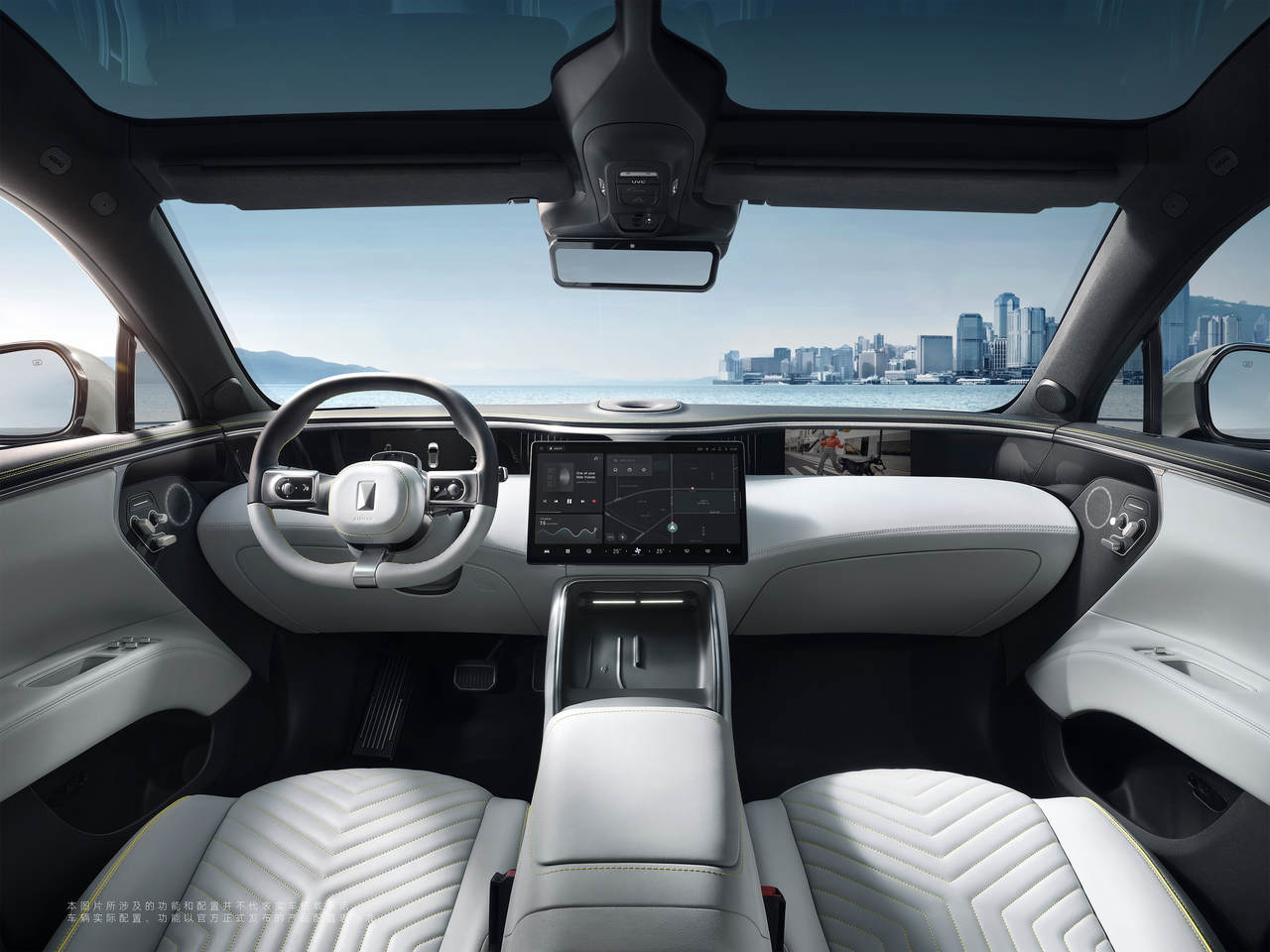
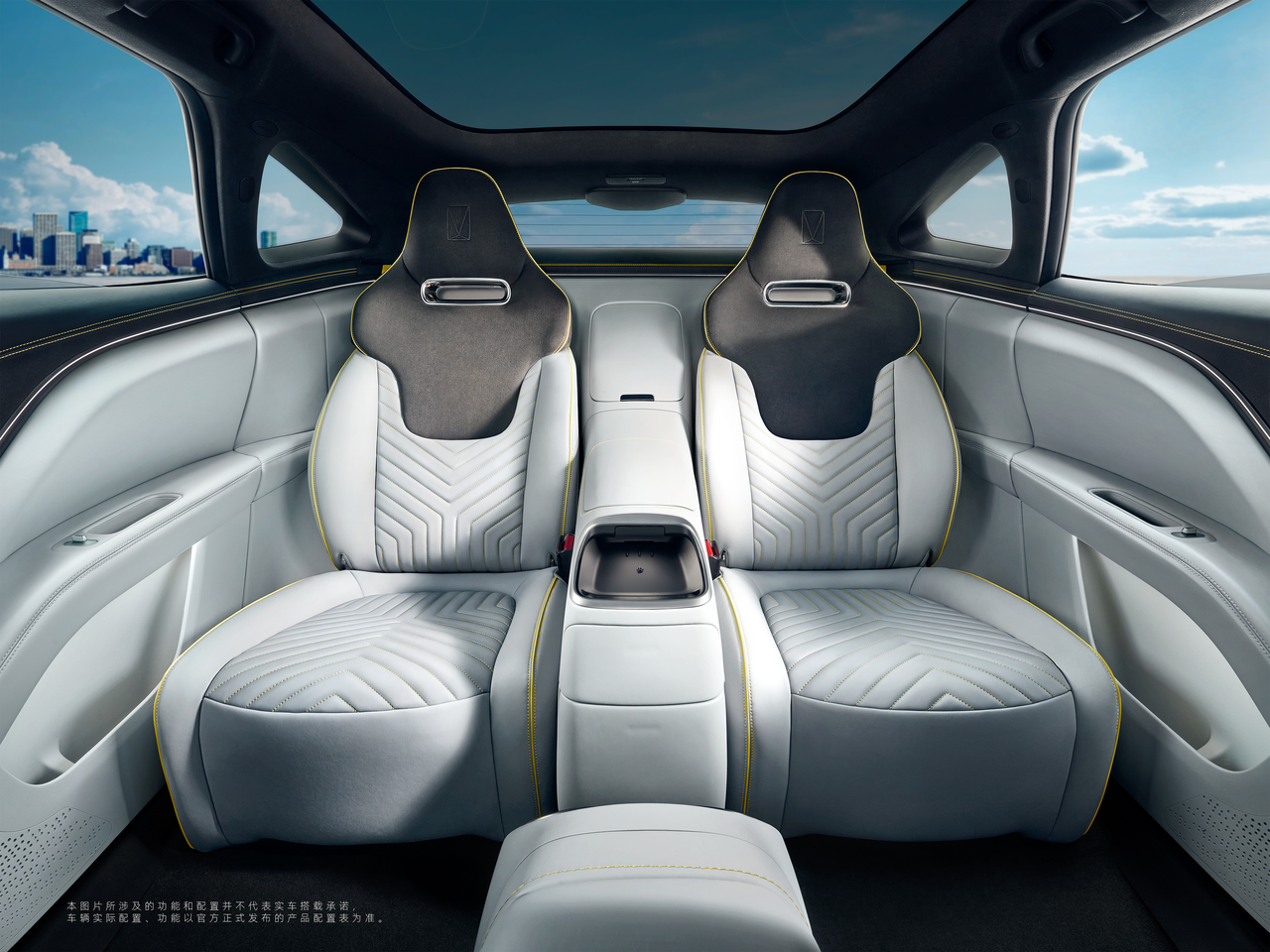
The interior styling of the Avita 11 is similar to that of the previously disclosed Avita 011, following the concept of a wraparound cockpit. The lines on both sides extend symmetrically and completely to the front and rear doors. The dashboard adopts a unique top-down layered design, and two 10.25-inch high-definition full LCD screens are placed on both sides of the interlayer as instrument screens and copilot screens, respectively. The main functions are concentrated on the 15.6-inch suspended central control screen.
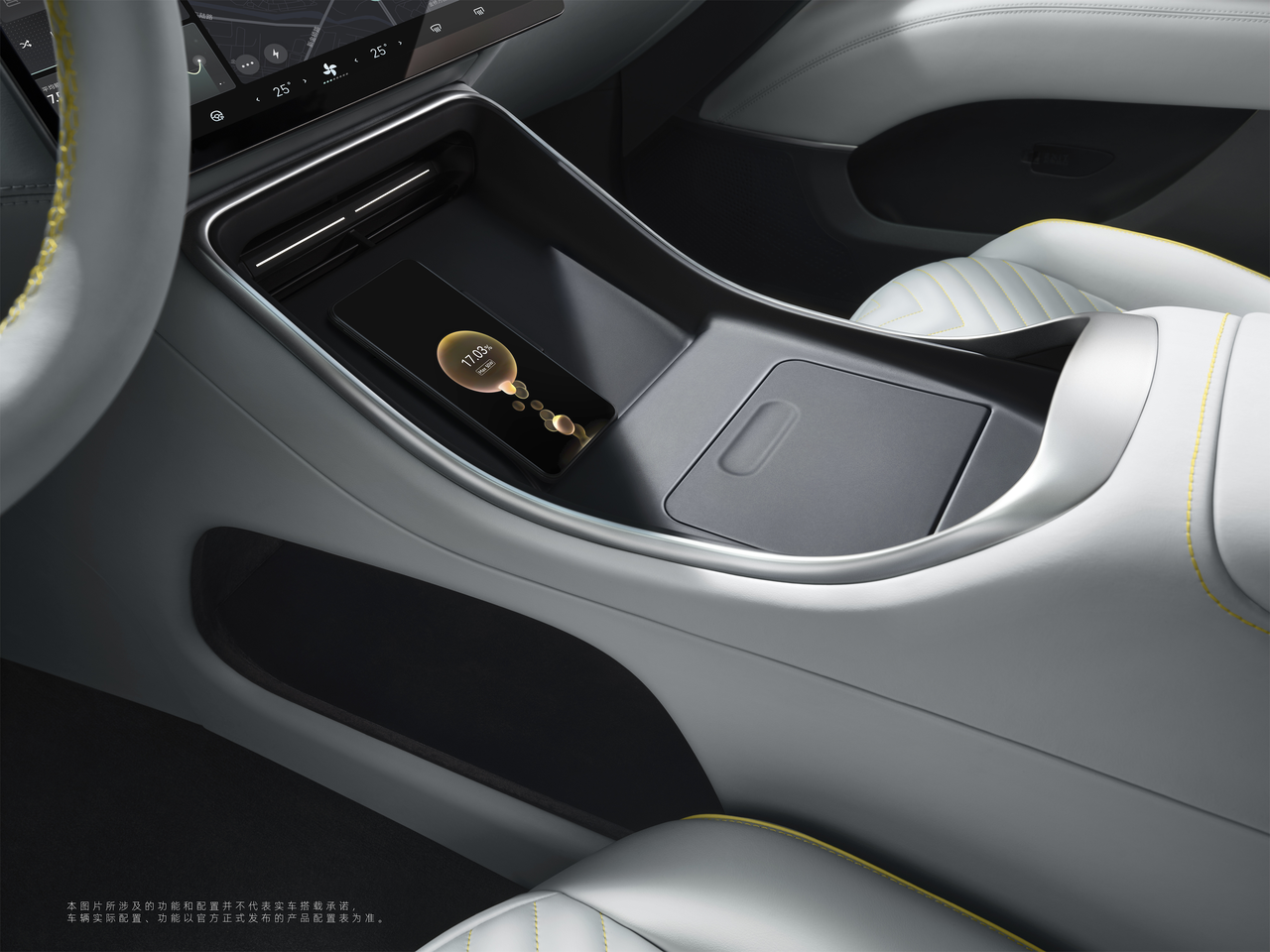 Below the screen is the phone wireless charging area with active heat dissipation, which supports up to 50W. Behind the screen is the Vortex Emotional Turbulence that AVITA Technology has been emphasizing. Simply put, it is a decoration with a circular ambient light. However, it can achieve various dynamic effects together with other ambient lights around, such as music rhythm, intelligent voice interaction linkage, and surrounded by water flow welcome.
Below the screen is the phone wireless charging area with active heat dissipation, which supports up to 50W. Behind the screen is the Vortex Emotional Turbulence that AVITA Technology has been emphasizing. Simply put, it is a decoration with a circular ambient light. However, it can achieve various dynamic effects together with other ambient lights around, such as music rhythm, intelligent voice interaction linkage, and surrounded by water flow welcome.
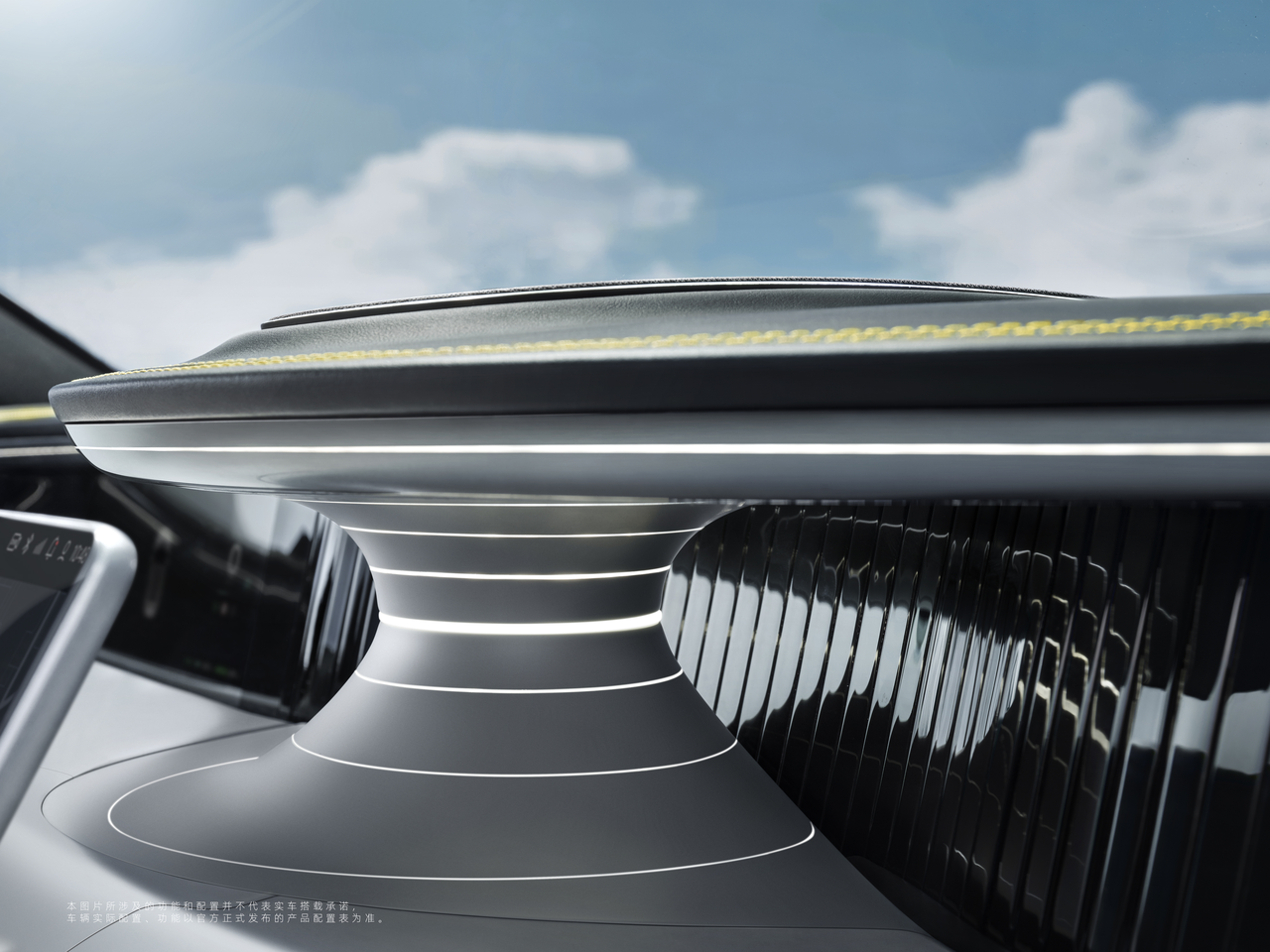
The Qing Gray version adopts a contrasting design of dark top and gray interior, including the steering wheel, seats, dashboard, door panel, and other color matching with black on top and gray on the bottom, supplemented with yellow stitching and edging embellishment, full of sporty atmosphere.
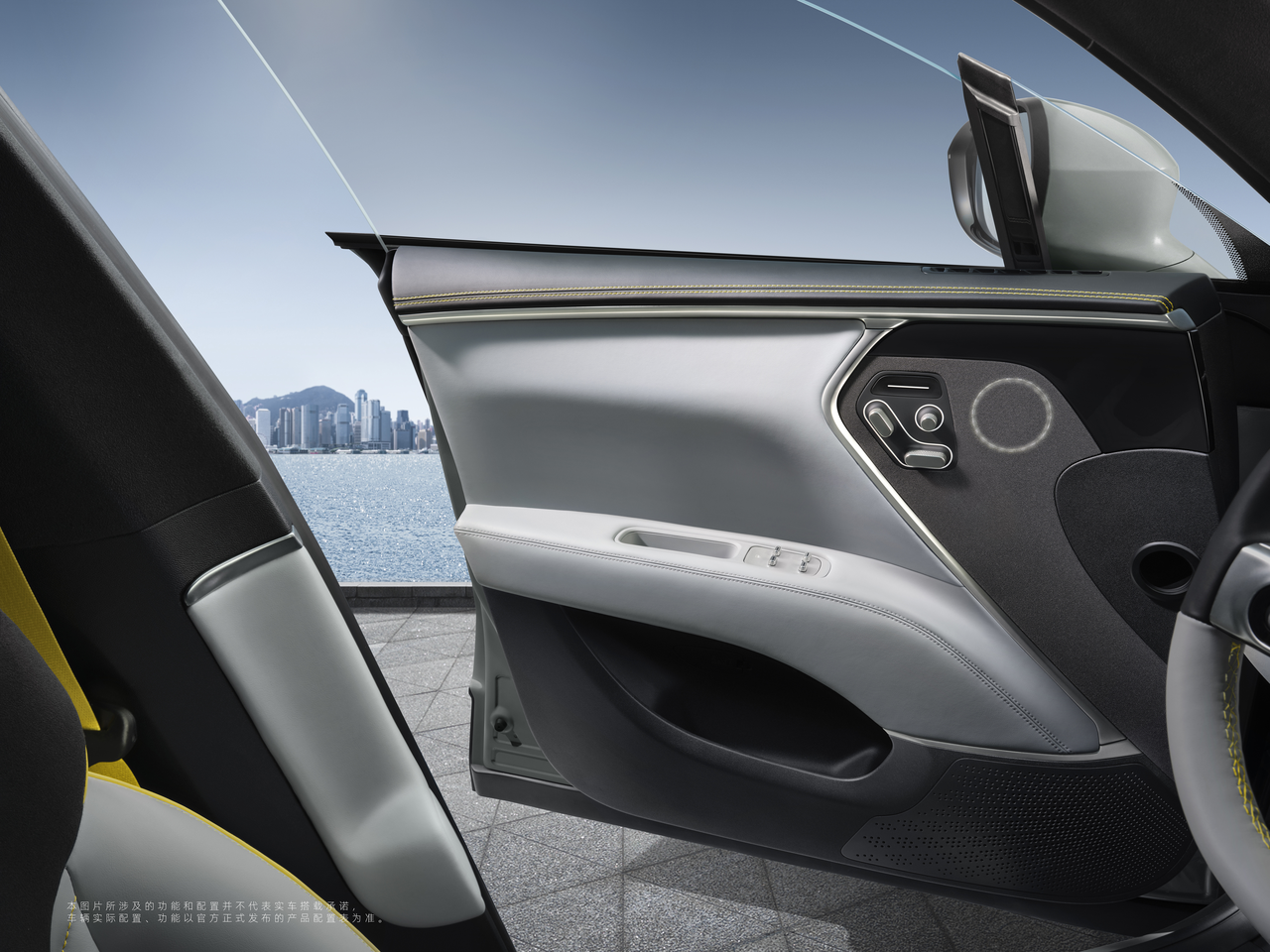
The Burgundy Red version is a combination of moon blue top and red interior, plus various antique bronze ornaments, creating a low-key and luxurious atmosphere.
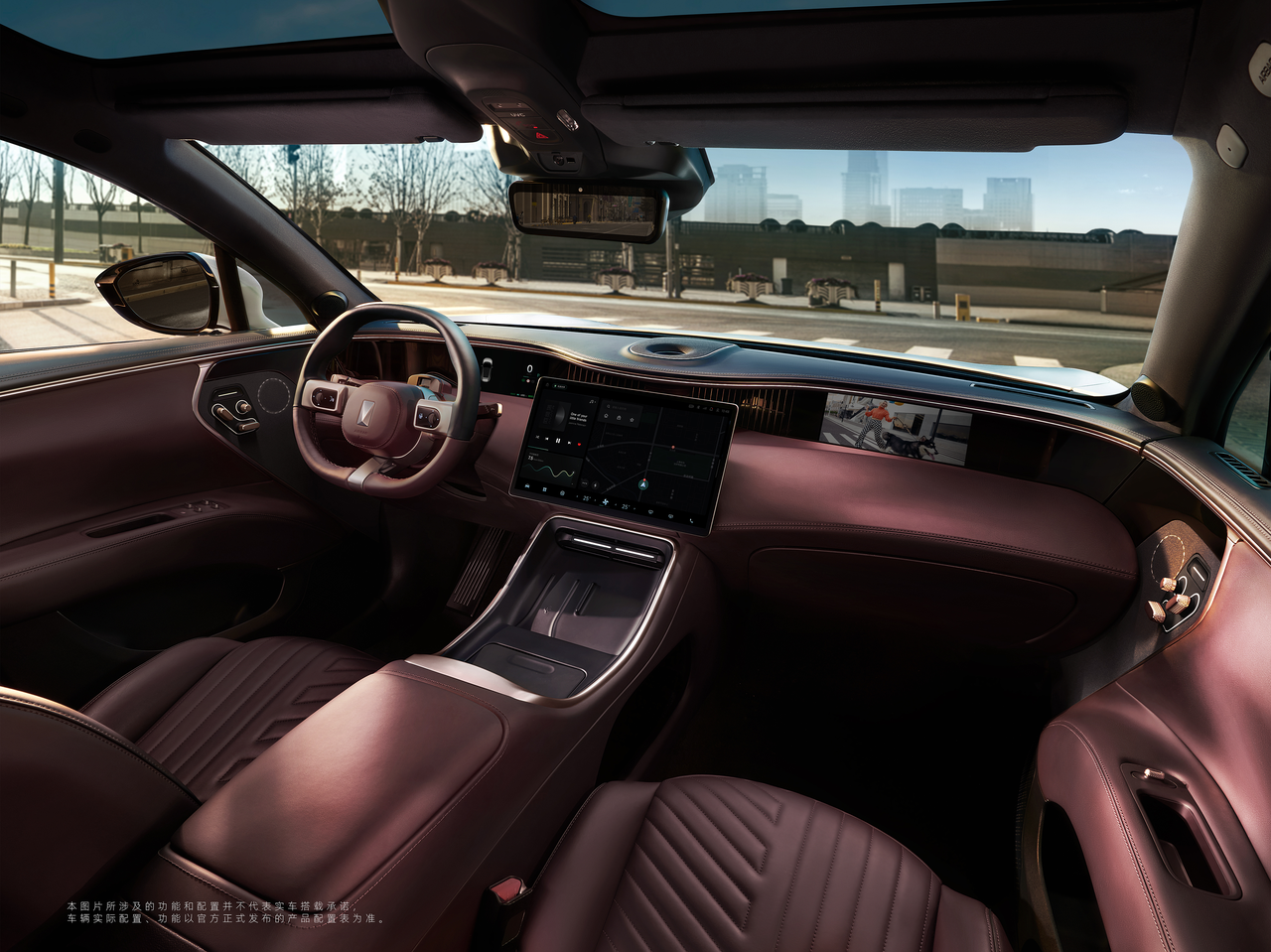
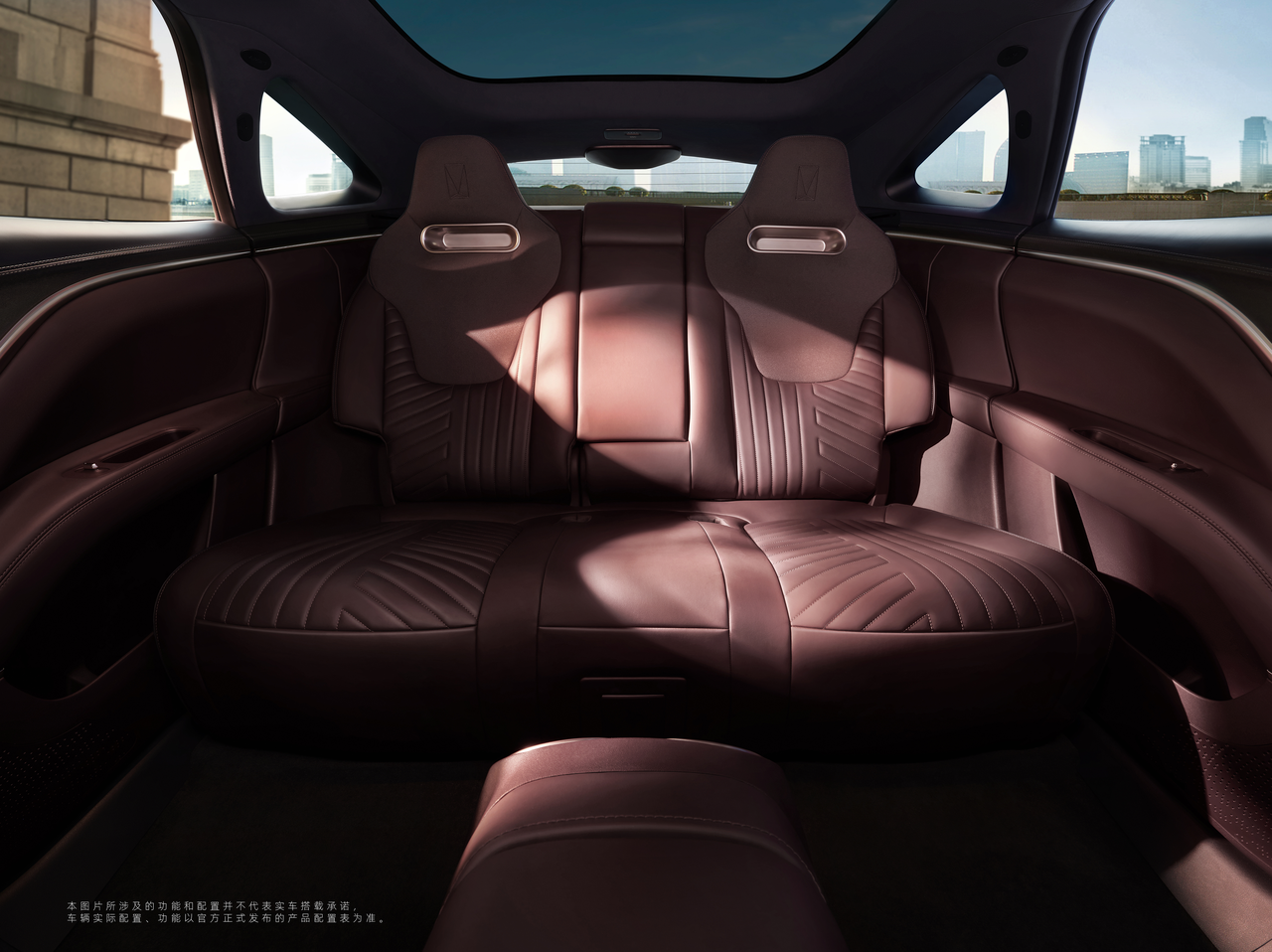
Quick Comment:
The interior design of AVITA 11 has indeed taken a different path in the face of the increasing homogenization of interior design. Regardless of aesthetics, when the market is flooded with products with complicated designs, simple products are innovative. In the new energy market, everyone unanimously advocates for minimalist interior design. Instead, designs with a sense of design, such as AVITA, become a spark that is different from others.
In the era of new energy, with the best-selling minimalist school led by Tesla, consumers have been subtly accustomed to the idea that new energy smart cars should be “simple and straightforward” and “technology-oriented.” It seems that a large screen is the best solution for the interior of electric cars.
However, AVITA 11 still insists on pursuing aesthetic design and craftsmanship, which is one of the reasons why AVITA 11 can continue to attract attention. It has almost revealed all the veils and only the most important suspense, price, is left to be disclosed. If the price is right, it may be a significant threat to new energy brands that emphasize luxury on the market.
NIO Officially Listed on the Singapore Exchange
At 9 am on May 20th, NIO held a listing bell-ringing ceremony on the Singapore Exchange, marking NIO as the first new energy vehicle company listed in Hong Kong, the United States, and Singapore.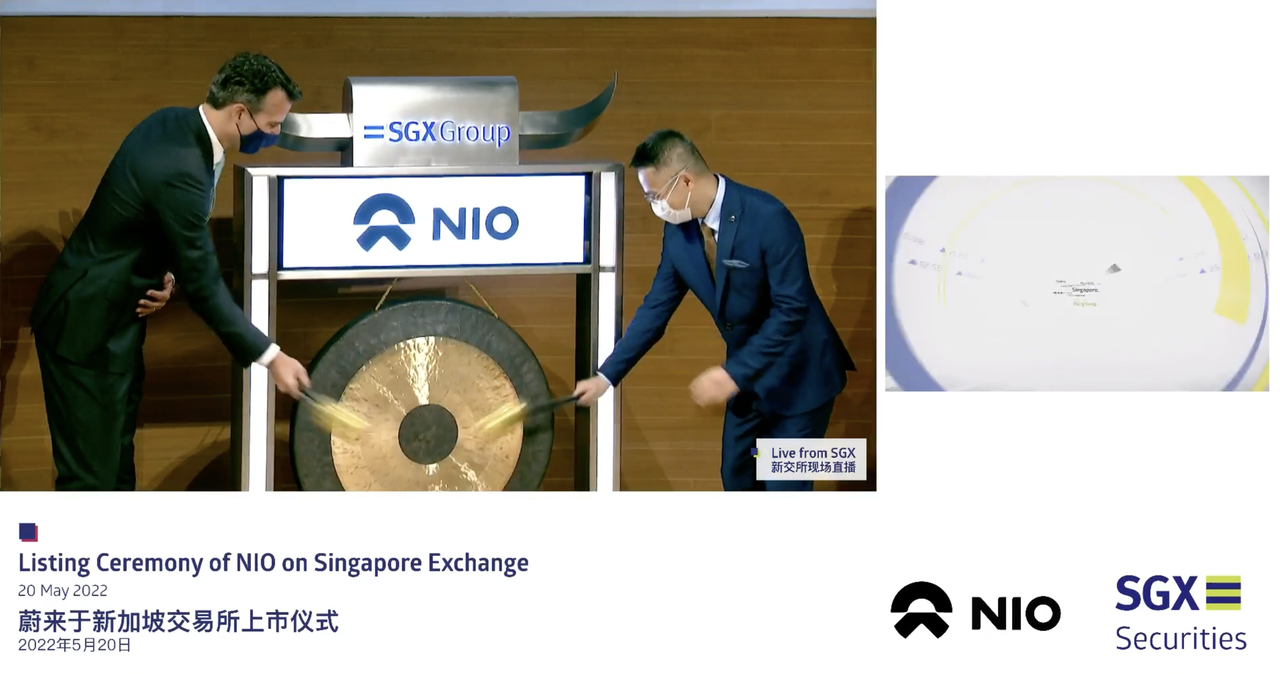
Mr. Lu Wencai, CEO of the Shanghai Stock Exchange, stated that NIO, as the first electric car company to list on the Shanghai Stock Exchange, has taken advantage of the opportunity. With this listing, NIO has gained access to many institutional investors around the world, and NIO’s customers in the Asia-Pacific region can also invest in and trade NIO stocks during the Asian trading hours. Lu Wencai stated that Singapore, as an international financial and financing center, is an ideal starting point for NIO’s entry into the Southeast Asian market.
Quick Comment:
Why did NIO choose to go to the Singapore capital market less than two months after listing in Hong Kong? This may be related to the recent inclusion of 88 Chinese concept stocks, including NIO, on the US Securities and Exchange Commission’s pre-delisting list, and Singapore is an important international financial center, where listing can expand its investor base, establish deeper contact with Asian investors, and build brand assets.
NIO stated that the shares it lists on the main board of the Shanghai Stock Exchange can be fully exchanged with the US depositary shares listed on the New York Stock Exchange.
Secondly, NIO’s path ahead is not smooth. The sales growth rate has slowed down, profitability is still a long way off, and the cost of user mode control has been questioned. From 2018 to 2021, NIO had a net loss of RMB 9.639 billion, RMB 11.296 billion, RMB 5.304 billion, and RMB 4.017 billion, respectively.
The pressure caused by the rise in raw materials and batteries has also impacted NIO’s profit margins, but investment in core technology development cannot be stopped. Therefore, NIO needs to expand its financing platform to obtain wider sources of funding, in order to maintain a financial advantage in the upcoming competition.
Tesla further opens up its own fast charging stations
On May 19th, Tesla further opened up its supercharging service to non-Tesla owners in Europe. Non-Tesla vehicles can now charge at “specific” supercharging stations in Austria, Belgium, Spain, Sweden, and the UK through the Tesla app.
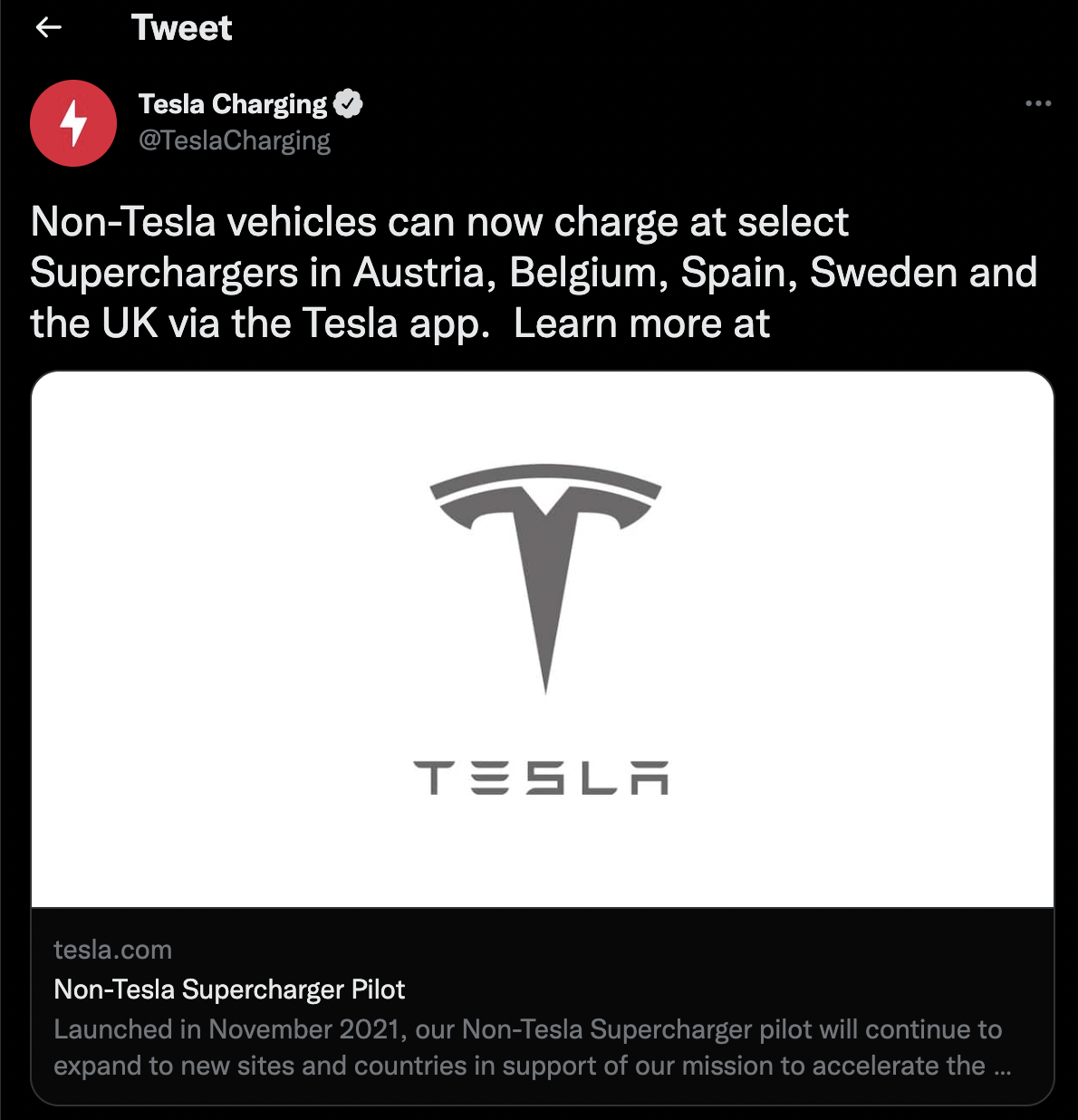
Users can choose the highest single-use price, or subscribe to a membership to get a lower supercharging price. Of course, these prices are higher than those for Tesla owners. In the Netherlands, Tesla owners are prioritized during peak periods, but because Tesla’s own charging piles are not yet deeply open, there are no incidents of Tesla and non-Tesla owners fighting for charging piles.
Quick Comment:
Tesla’s supercharging system can be called the world’s most densely distributed energy supplement system. Li Xiang, founder of Ideal Auto, believes that Tesla’s success lies in the fact that it has won all its competitors in supercharging stations.Last year, Musk announced on Twitter that they would open up their supercharging stations to all brands of electric cars. This move is simply further expanding the range of accessibility. However, Tesla owners are the most resistant to this move as the convenience and exclusivity of Tesla’s supercharging stations are one of the reasons many consumers choose to purchase a Tesla. Will the development of charging stations now weaken Tesla’s original advantage in the energy supply system?
However, Tesla’s decision to open up its supercharging stations to non-Tesla owners despite the opposition of old owners is likely due to a desire to increase revenue. Goldman Sachs predicts that opening up the supercharging network to non-Tesla owners will generate more than $25 billion in annual revenue for the company.
DENZA D9 officially begins pre-sales
On May 17th, DENZA D9, a high-end brand under BYD, began pre-sales. The body size is 5,250 × 1,960 × 1,920 mm, with a wheelbase of 3,110 mm. This data has surpassed that of Toyota Sienna and Alphard. Of note is the car’s height of 1,920 mm, which is nearly 70 mm higher than the Alphard, laying a good foundation for the overall spaciousness of the car.
DENZA D9 is available as either a hybrid version or a pure electric version, with the following pre-sale prices for the hybrid model:
-
DM-i 945 Luxury Version 335,000 RMB;
-
DM-i 1040 Premium Version 375,000 RMB;
-
DM-i 970 Four-Wheel Drive Premium Version 405,000 RMB;
-
DM-i 970 Four-Wheel Drive Top Version 445,000 RMB.
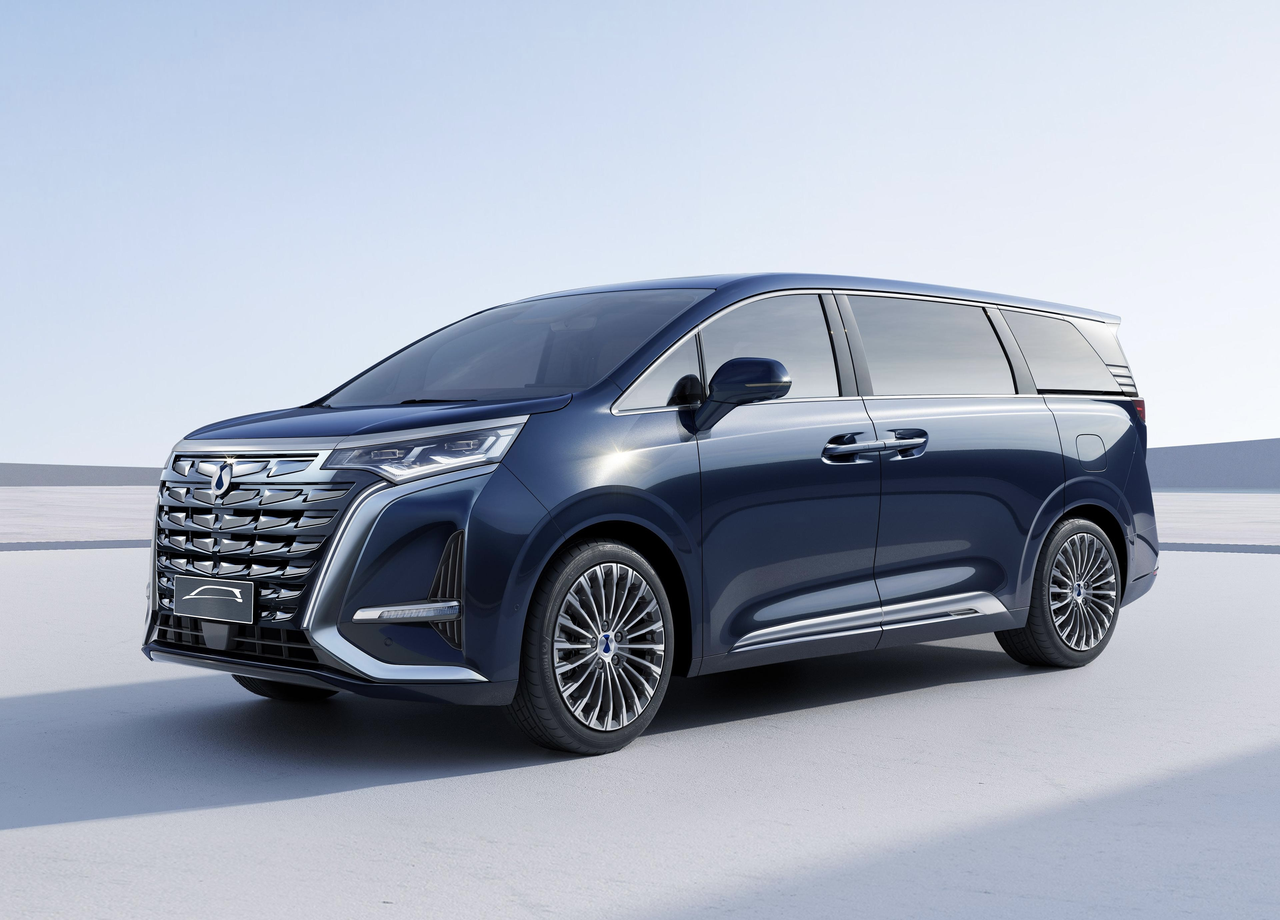
The price of the pure electric version is slightly higher:
-
EV 600+ Honor Version 390,000 RMB;
-
EV 600+ Four-Wheel Drive Top Version 460,000 RMB.
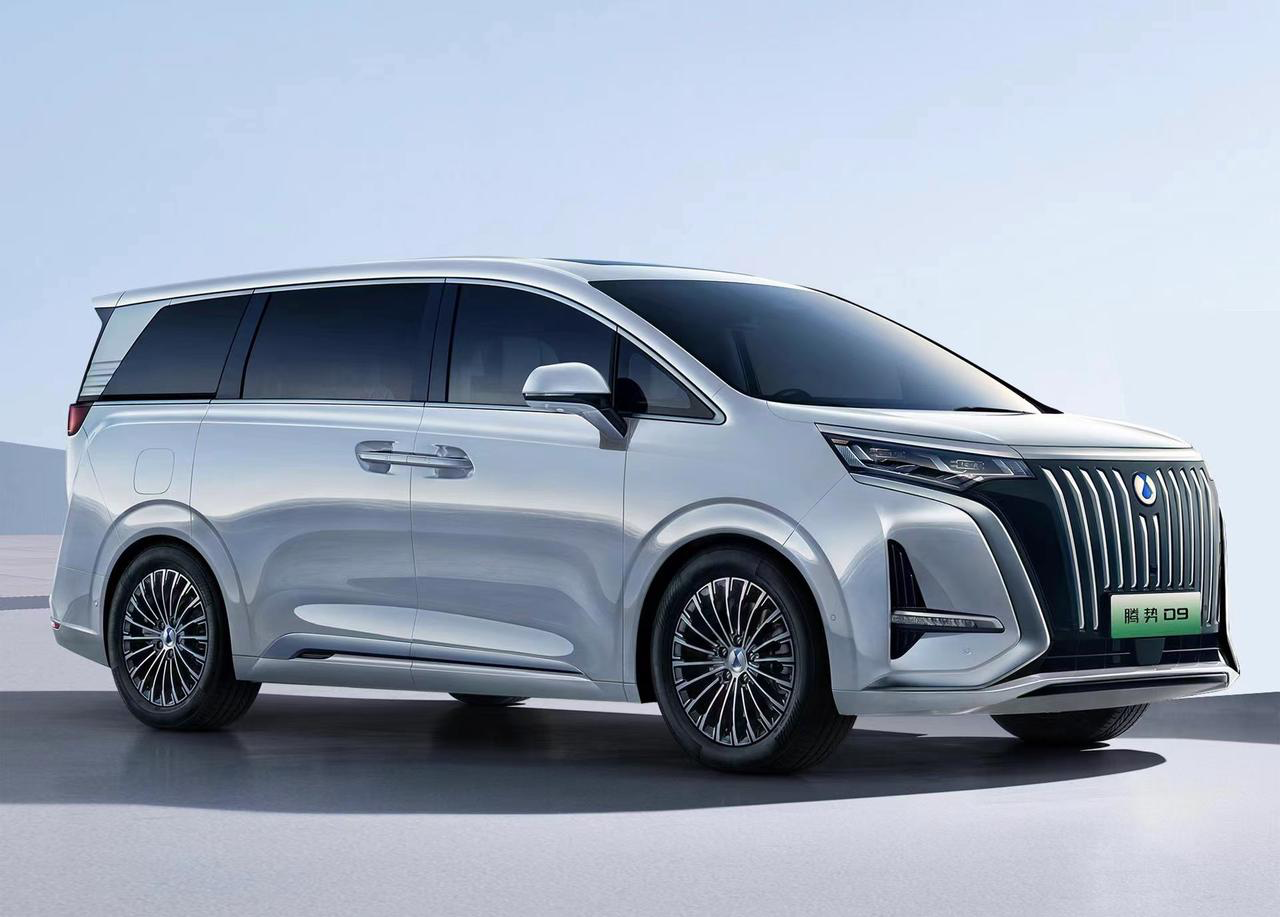
The CLTC range of the two pure electric models exceeds 600 km, but DENZA did not disclose detailed information on the battery configuration and power of the vehicles at the pre-sale launch.
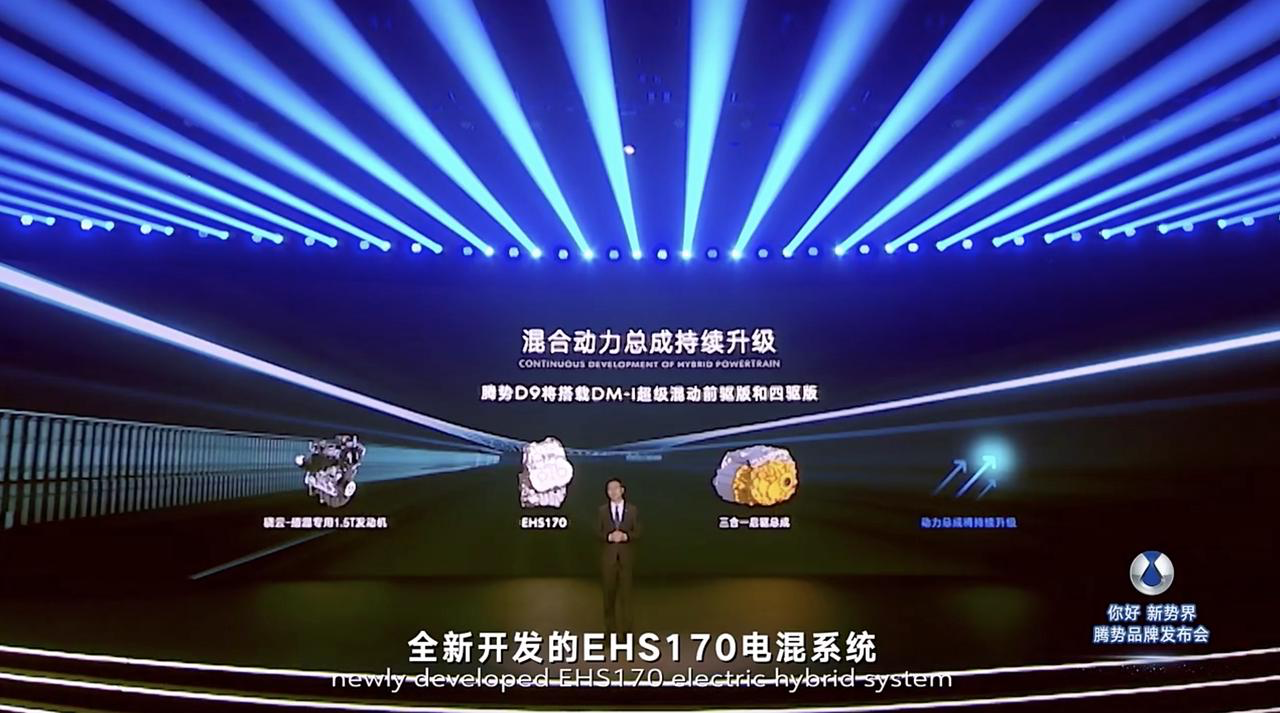
As the key model in this dual-power model, the DENZA D9 DM-i hybrid version is equipped with a 1.5T engine and an EHS 170 hybrid power system. According to the official description, the DM-i model will provide ultimate fuel consumption performance. The NEDC fuel consumption of the four versions of the D9 are:
-
Luxury Version 5.9 L
-
Premium Version 6.2 L
-
Four-Wheel Drive Premium Version 6.7 L- 4WD flagship model 6.7 L
On the battery front, the DM-i model of the D9 is equipped with a power-type blade battery for plug-in hybrid models. Except for the entry-level luxury model, the other three versions all support 80 kW DC fast charging, with corresponding NEDC pure electric ranges of 190/180/180 km respectively.
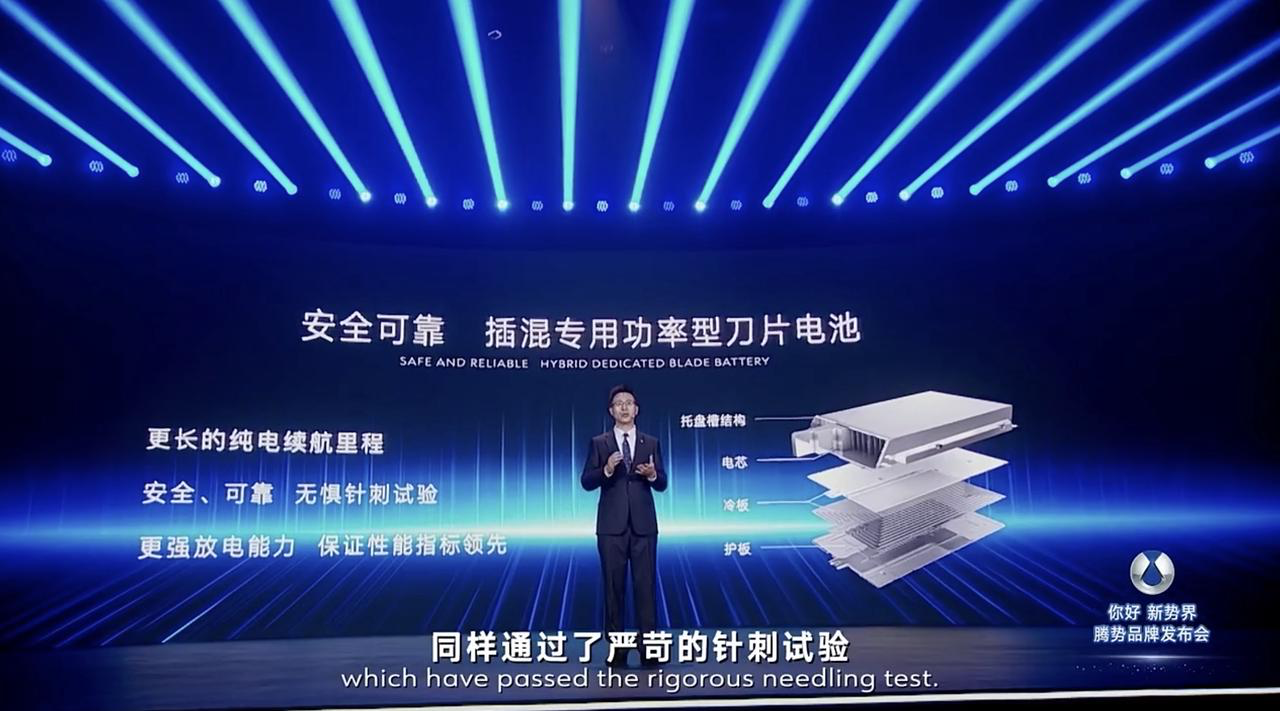
As an MPV, the D9 adopts a 2+2+3 seat layout, with two aviation seats with leg rests in the second row, and full ventilation, heating, massage, and sleep headrests. The configuration is impeccable. With the standard four-door double-layer soundproof glass, the DENZA can keep the vehicle noise level below 65 decibels at 120 km/h.
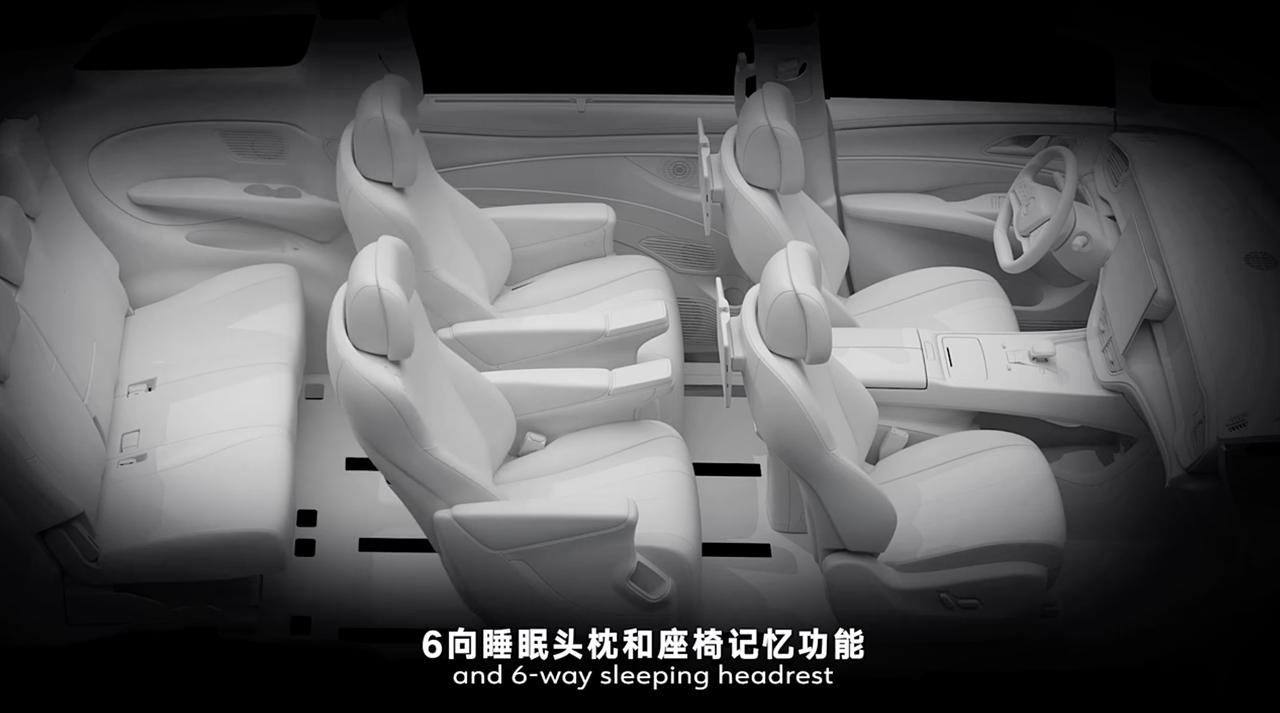
Familiar double-spoke steering wheel, suspension type “flat” central control, pebble-shaped gear lever, and U-shaped central control console. The interior of the D9 can be seen as distinctly BYD-designed at first glance. Although the overall design of the D9 is still BYD’s thing, the consistency, taste, and sense of luxury of the design theme after modification have indeed made significant progress.

On the smart cockpit front, with the optional HUD system, the D9 can have up to 7 screens in total, including:
-
10.25-inch instrument cluster display
-
12-inch HUD
-
One 5.5-inch armrest screen for each of the two rear seats
-
Two 12.8-inch headrest screens for the rear seat
-
15.6/17.3-inch central control screen
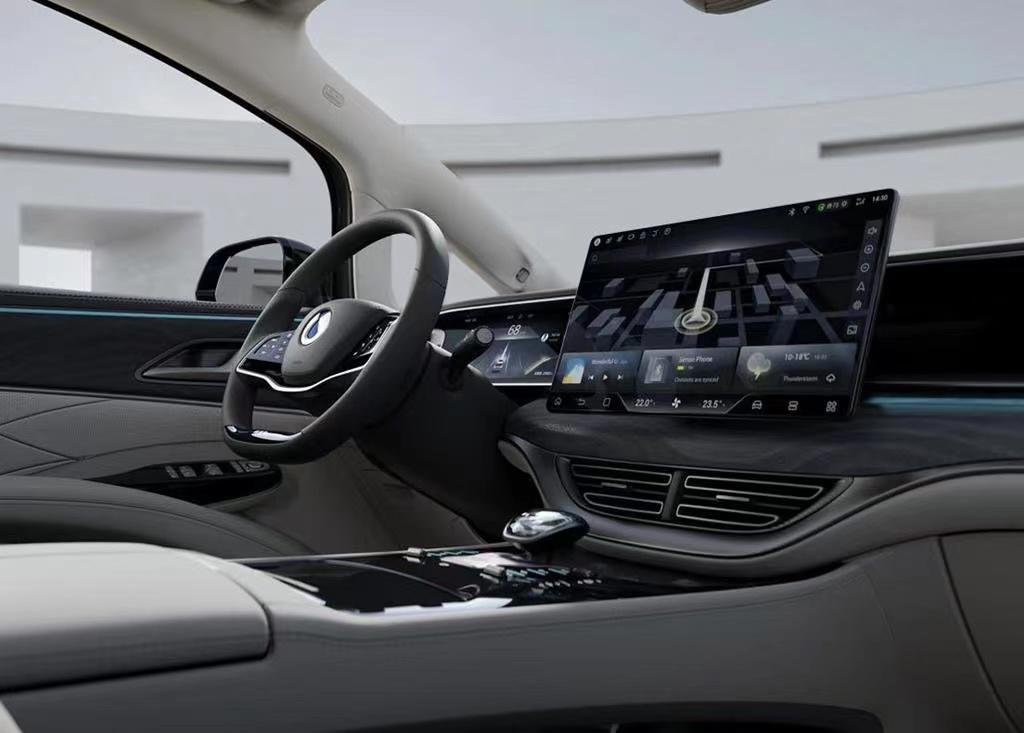
In addition to the screens, the voice system of the D9 has finally caught up with the industry mainstream, with all models equipped with the three key functions of four-audio-zone voice recognition, continuous conversation, and visible voice input.
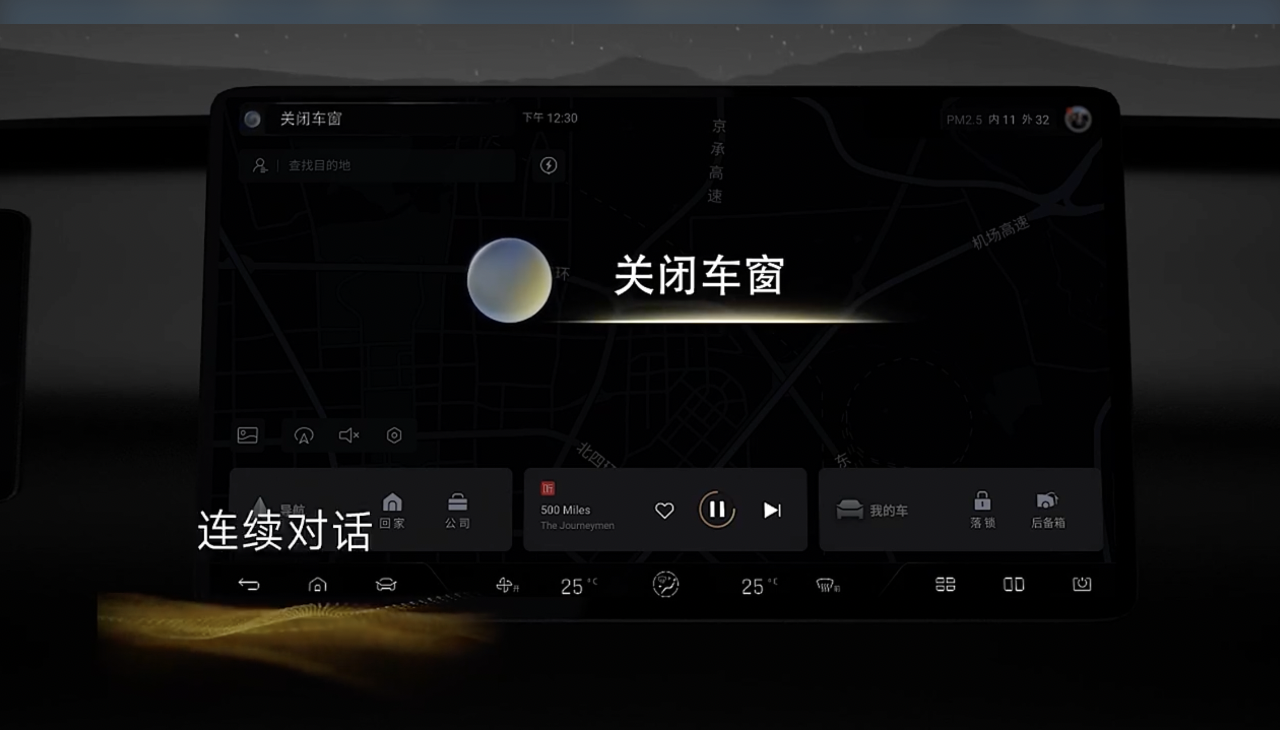 The chapter about the D9 assisted driving system in the entire press conference was the least clear. The official stated that the D9’s assisted driving will adopt the method of early pre-embedded hardware and later upgrades. However, the official did not introduce the detailed perceptual architecture of the assisted driving, nor did it elaborate on the calculation hardware for the assisted driving system, where commonly used keywords in the 2022 intelligent driving field such as “Lidar” and “high computing chip” did not appear. This is also the biggest regret in D9’s product strength.
The chapter about the D9 assisted driving system in the entire press conference was the least clear. The official stated that the D9’s assisted driving will adopt the method of early pre-embedded hardware and later upgrades. However, the official did not introduce the detailed perceptual architecture of the assisted driving, nor did it elaborate on the calculation hardware for the assisted driving system, where commonly used keywords in the 2022 intelligent driving field such as “Lidar” and “high computing chip” did not appear. This is also the biggest regret in D9’s product strength.
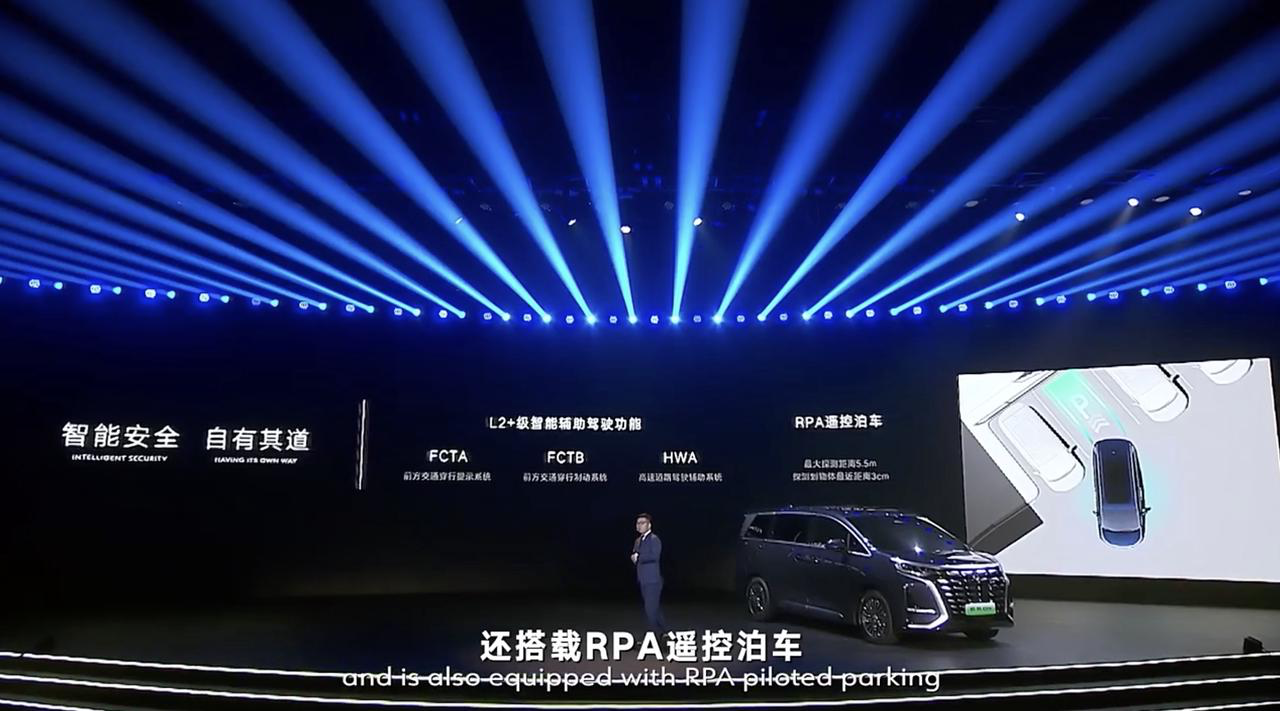
Comment:
From 2014 to 2021, the NIO brand has accumulated losses of more than 5 billion yuan. In recent months, BYD has continued to sell over 100,000 vehicles per month, forming a sharp contrast with NIO, which has only sold a little over 20,000 vehicles in the last three years.
NIO has not yet found its own foothold in the high-end new energy brand and indeed started early but was late. The failure of cooperation with Mercedes-Benz also made us see that BYD is no longer blindly following others’ aura, but is defining its new road to “luxury”. During the entire press conference, it was difficult to see any words related to Mercedes-Benz in the product part. Now that BYD holds 90% of NIO’s shares and undertakes more, the advantages and disadvantages of the NIO brand will be more relevant to BYD.
NIO’s marketing and products have established dedicated teams, and there is also a new online store and direct sales channel. The same situation also occurs in design, product thinking, software experience, and user operation. Compared with the previous NIO, the non-product links make people look forward to BYD’s further success in high-end development.
This article is a translation by ChatGPT of a Chinese report from 42HOW. If you have any questions about it, please email bd@42how.com.
